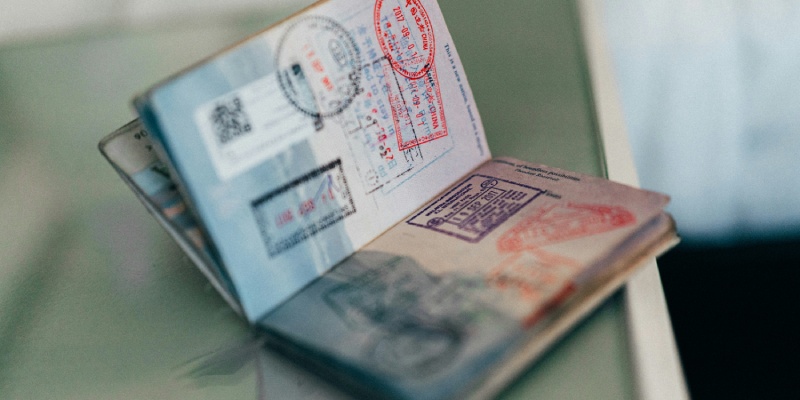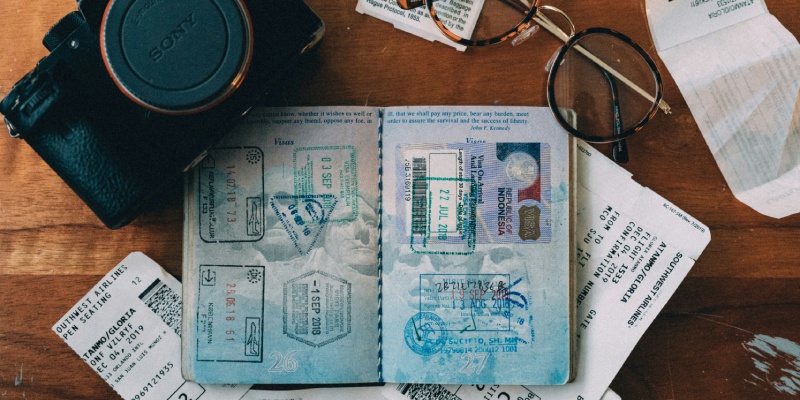Airwander: Should You Try This Platform For Booking Your Travel?
BY sagnika Jul 12, 2023
Are you an Airwanderer? Do you think this platform is quite effective for making bookings? Read the article to learn more. A flight meta-search engine, Airwander combines travel with cheap stopovers and automated suggestions for a flight. The company's founders, Ela Bader, and Douglas Deming, live a digitally nomadic lifestyle contributing to their startup further expanding across Hawaii, Honolulu, Malaga, and Spain. The search engine or the website of Airwander is also accessible in an app form developed in 2014, and finally, it was released in 2015 with the name of QuestOrganizier. Later, with significant enhancements and rebranding, it was launched in 2016 at TechCrunch Disrupt London. According to the official website, www.airwander.com, the Airwander V2 went live in 2018, while the V3 is still under development. The app provides a detailed layout across a city or region that a probable passenger is trying to book. Airwander: Should You Try This Platform For Booking Your Travel? Airwander is majorly an integration of automated systems and stopovers leading to the recommendations or suggestions made to the customers by the website. Stopover is different from a layover, and it is the feature that is the unique element of Airwander. Stopover allows a passenger to explore a city as it extends for 24 hours and more, while layover is just about connecting flights through a specific country or regional airport. Many passengers want to reach their destination as fast as possible; however, with a stopover, passengers who like exploring new places can find the perfect booking. Therefore, passengers can add stopovers to their central booking instead of booking separate tickets for different locations. What Is Airwander? Ela Bader and Douglas Deming are the creators of the service Airwander, who founded the company inspired by their 8 months of a backpacking trip across South America. They added other countries to their journey to save up money. Airwander is a flight metasearch engine that produces itself by adding multi-day stopovers, making the experience of the flyers more elaborate and diverse. You can hop in many cities before reaching directly to your location with the help of it. The website of Airwander is integrated with advanced algorithms which suggest individuals book stopovers that will be added to the flight booking. All the routes are considered by it the moment you input all the details of departure and arrival dates, location, and other such information. According to the reviews on Producthunt.com, it rates 4 out of 5 based on 606 votes. Many studies have agreed about the advantage of stopovers and recommended the website. What Benefits Of Airwander? The fact that air wander helps in visiting and exploring new places before focusing on your final destination. If you have a travel buddy, you both might like to explore new cities before reaching the final town or region you visit. Savings You can save money, especially if you add stopovers to direct travel between two locations. For example, you can save up to $101 if you book a 3 day stay in Los Angeles. There is additional information available while booking because you receive recommendations and suggestions. Most Affordable Flights Airwander flights are affordable compared to other booking sites and search engines for travel. You will find that the services offered by Airwander are comparatively cheap because they are in partnership with other brands. With the increasing competition and services offered by other websites that provide travel and accommodation booking, air wander is considerably affordable regarding flights. Personalized Layovers The users can customize the layovers. If you book flights on Airwander, you can personalize the layover. You can adjust accordingly to manage the takeoff time and landing time accordingly. Layover is controlled based on the trip. Customized Destination The destination is customized based on the directions of the flights and how you manage the trip. When flying to a specific location or region of the country, you can add more stops to the trip. What Disadvantages Of Airwander? There are limited disadvantages, as it is most effective for users who like exploring different cities before going to a specific location. The Website Could Be Faster At times, the website of Airwander could be faster, which can be difficult for users. Sometimes, the website needs to catch up, making it more difficult. Expensive On Certain Occasions On specific occasions, the charges for flights in Airwander are pretty high. It can be not easy, especially when adding additional flight stopovers. Should You Use The Airwander Platform For Making Bookings To Travel? Image Source: techcrunch.com You can use Airwander because it is quite effective to make cheap bookings and yet create a diverse itinerary. The service has been designed so that users can use this service through flight hacking features. It is the stopovers that help individuals to take advantage of this service because the AI of the website effectively integrates the cost-effectiveness. You can receive travel insurance when you book flights at Airwander, considering you will get covered based on injury, theft, and illness. You will receive both Visitors Coverage and Safety Wing with the insurance regarding travel management on it. The service effectively helps users to find the best and exclusive deals. The website can further be improved by working on the speed of the website loading and how it needs to make the services available. You can add up to 3 stops or more for each trip; the landing and takeoff times are correct. Alternatives For Airwander Other alternatives to Airwander are verified and can be used instead of this service. These alternatives are significantly cost-productive and help in integrating cutting-edge services. ComplyCube The site verifies the customers within 15 seconds, which helps integrate cutting-edge services such as API and SaaS platforms for identity verification. Skyscanner You can also use Skyscanner, through which you can choose cheaper flights helping people get the best deals. The website lets customers compare more than 1000 airlines worldwide and their most reasonable offers. KAYAK A travel search engine, KAYAK, has effectively connected several significant travel sites for booking cheap flights and affordable deals. You will receive compelling features and tools that can be used to check up on rental cars, hotels, vacation packages, and flights. Google Flights You can find the cheapest flights on Google Flights by putting the destination on the map. You can sign up from your Google account to receive alerts on your booking. How Is A Stopover Different From From A Layover? To help you better understand the features of the service, it is necessary to familiarize yourself with a few flight terms before continuing with our Airwander review. To begin with, what is a stopover and how is it different from a layover? When you spend less than a day at a connecting city prior to reaching your ultimate destination, it's known as a layover. Conversely, stopovers are defined as stays of one day or longer. What does this signify, then, for a tourist? Some travelers prefer to take a slower route, visiting a few different nations or cities along the way, while others want to reach their destination as quickly as possible. A stopover gives you more flexibility to explore connecting cities than a layover because it lasts longer than 24 hours. Using stopovers is the best way to accomplish goals such as visiting a landmark, going on a tour, or spending time with friends or family who are from a different country. However, why? Why are stopovers preferable to purchasing individual tickets for each destination? To learn more, read our review of Airwander. Who Is Airwander For? Anyone who enjoys traveling should use Airwander. However, it's a particularly appealing service for two kinds of travelers: those who love adding layovers to their flights to explore new places, and those who are constantly searching for flight deals. Airwander is ideal if your travel schedule allows you to smuggle in a few extra days to spend exploring a place. The purpose of Airwander's search engine is to provide travelers with the most affordable options for places to stopover, rather than having them look for a specific destination. This is not to say that you cannot intentionally choose a stopover at a particular location; however, if your destination is not listed in the first set of results, you will likely have to pay a high fare. In light of this, the service is designed for more impulsive travelers who won't hesitate to visit an unknown location. Recall that while traveling allows for spontaneity, going without travel insurance does not. Verify that you are protected! Having without needing is preferable to needing and not having! Conclusion Please read the article to learn more about Airwander and the benefits that you might get if you use it. Comment below about whether you think it is worth using Airwander if you are interested in exploring more cities before you reach your destination. Read Also: Everything About Breeze Airways: Breeze Airways Reviews, Features, And More! Norse Atlantic Airways Reviews And Other Information To Check Out Is Spirit Airlines Safe? Get Your Answer Here!

















